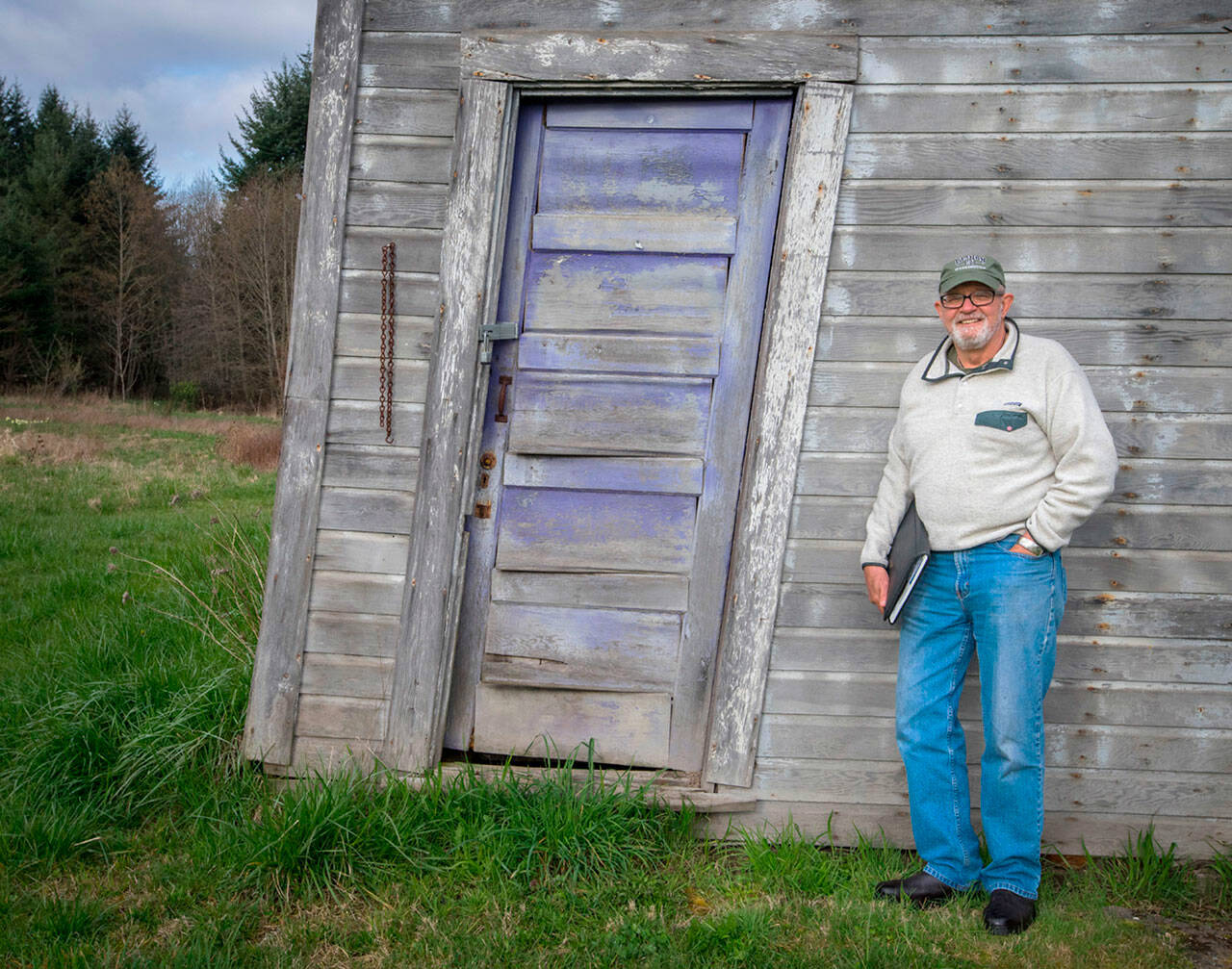Editor’s Note: All of us here at The Beachcomber are thankful to celebrate the milestone of publishing the 100th edition of “Time&Again,” a recurring feature by writer Bruce Haulman and photographer Terry Donnelly, detailing the rich history of the place we call home. Here, Haulman and Terry take us behind the scenes of their remarkable collaboration. From the past, we can better understand the present, and work toward a better future here on Vashon. Long may “Time&Again” continue to help us do just that on Vashon.
— Elizabeth Shepherd, Editor
The Historian
Twelve years ago, in May 2009, Terry Donnelly and I published our first Time&Again article in The Beachcomber, encouraged by then editor Leslie Brown.
This is the 100th Time&Again. During these past 12 years we have worked with five editors and then with reporters, Elizabeth Shepherd and Paul Rowley, when the newspaper dropped having an editor in April 2020, due to the COVID lockdown. Shepherd was appointed editor of the Beachcomber this past October.
The inspiration for Time & Again came from Paul Dorpat’s long-running weekly series of articles, “Seattle Then&Now,” which were first printed in January 1982. Leslie Brown approached us with the idea and the very first Time&Again, titled “Vashon Heights Dock” was printed.
During these 12 years and one hundred articles, we have written about and photographed diverse Vashon places, events, and people.
We began by highlighting historic places, such as the Nike Base, Dockton’s Piano Row, the Point Robinson Lighthouse, and the Mukai Garden. The series evolved into covering island events, including the Hydrofoil Crash, the Other Maury Island Incident, Strawberry Festival, and the Introduction of English Ivy to the island. And finally, we began to include island people — photographers Norman Edson and Terry Donnelly, rowers Don Canfield and Mia Croonquist, bicyclists Kuichi Tanaka, Bob Horsley and Bruce Morser, and ferry captains Gertrude Wiman and Marsha Morse.
Over the span of these one hundred articles, the style and approach has grown, matured, and morphed, driven largely by Terry’s photographer’s eye and his sense of how to communicate through images. Beginning as a “then and now” approach, we very quickly decided that approach was not totally satisfying to us or to our readers. After the first twenty or so articles, we began to switch to a more personal view and to a focus more on people and events rather than strictly places.
Places still played an important role, but the Dorpat style of recreating historic photographs gave way to a more interpretive approach that attempted to capture the sense of place and the sense of changes that have taken place.
— Bruce Haulman
The Photographer
As our Time&Again series began, it was largely inspired by historic photographs from the Museum’s archives; images which might offer insights into Vashon history and the passage of time if we compared those old views with contemporary ones. Bruce and I soon discovered how many of those historic vistas were now completely obscured by trees, often making visual comparisons impossible. The persistent and unsurprising lesson is that the island is being dramatically reforested.
As our series progressed, it became apparent to me that the most engaging aspect of our project wasn’t so much in visual comparisons — old vs. new — but in the narratives associated with the passage of time. The real story was not so much about the physical changes of Vashon, but about the people who witnessed and affected those changes and the stories they had to tell.
It is always fun poking around the island coves and back roads with Bruce, old photos in hand trying to ferret out the old tripod holes of Van Olinda or Edson. However, the real joy for me was photographing and sitting in on the interviews we did with the people who had witnessed those times we were trying to illuminate. Those behind-the-scenes tales, family histories, and richly personal details might never be printed but nonetheless, they added insight and color to the articles Bruce crafted.
Although the images we see here are not directly concerned with the subjects of these articles, they are illustrations of those wonderful encounters we had with the islanders who knew the stories, the people who grew up in the buildings, founded the organizations and altered the landscapes we were investigating.
Maybe for the next hundred stories, we should sell tickets to ride in the back seat of Bruce’s car.
— Terry Donnelly


